
Pre-powder vertical roller mill is a raw material pre-treatment grinding equipment, specially used to increase the output in cement production process, and can also be used for sand making or fine sand making. It can process limestone, dolomite, calcite, quartz, marble, coal gangue, granite and other Mohs hardness below 7, density between 1.4 and 4.6, compressive strength below 260Mpa, non-flammable and explosive minerals, and non-corrosive brittle materials.
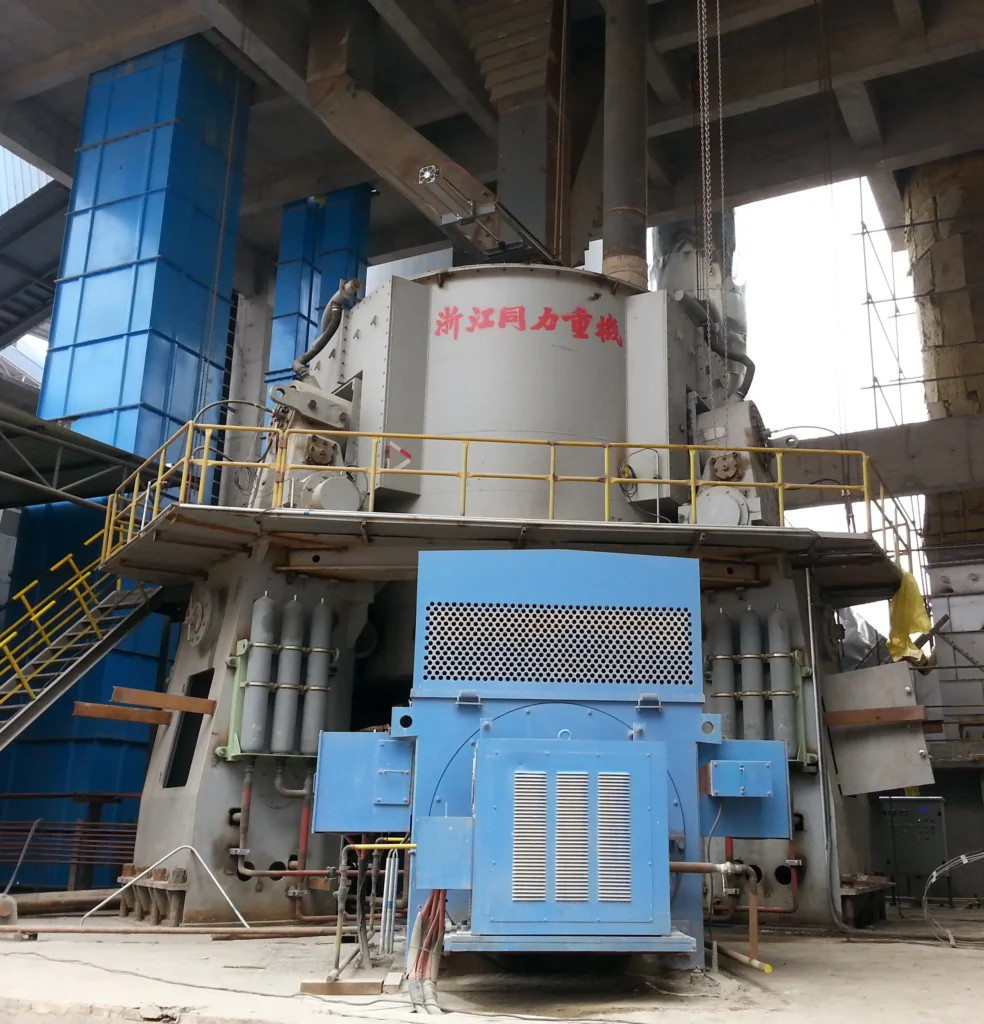
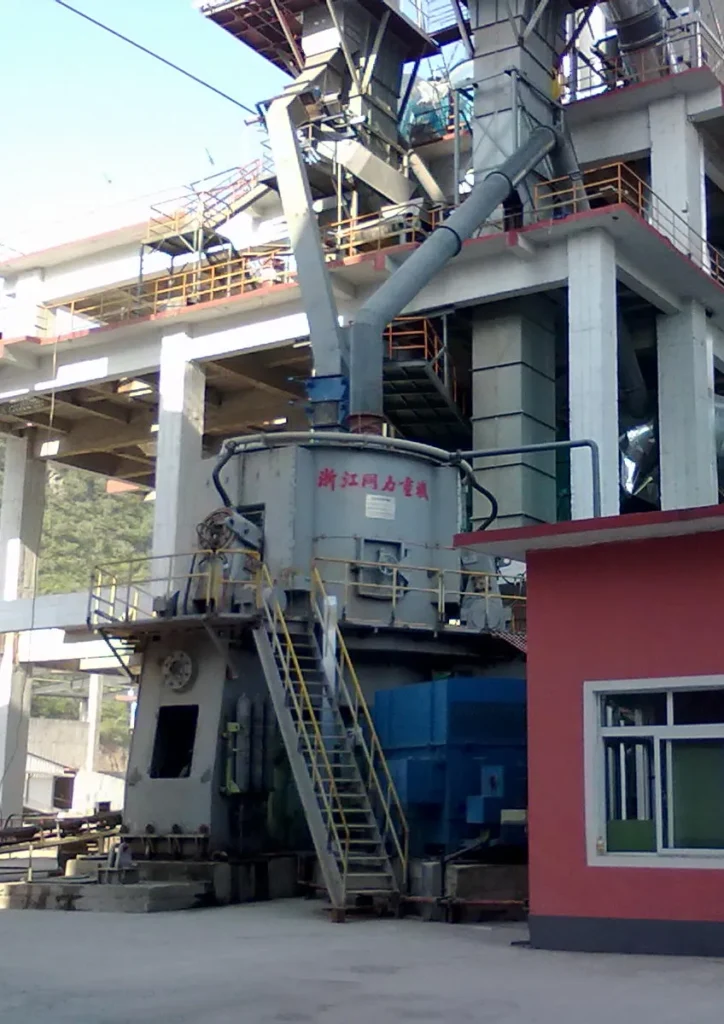
One machine, two jobs
A MACHINE YOU CAN DEPEND ON!
Pre-grinding vertical mill is specially designed for raw material pre-grinding, which can improve grinding efficiency and reduce system burden. It is suitable for cement and mineral industries.
The waste gas at the end of the rotary kiln can be used to dry materials, and raw materials with a moisture content of up to 15% can be dried and ground at the same time;
Adopting advanced material layer grinding technology, the power consumption of the system is 20 to 30% lower than that of a ball mill. As the moisture content of the raw material increases, the power saving effect becomes more significant;
There is no direct contact between the grinding roller and the grinding disc during operation, and there is no metal impact. The noise is 20 to 25 decibels lower than the ball mill. The system adopts fully sealed negative pressure operation, no dust, and the production environment is clean;
| Model | Feed Size (mm) | Feed Moisture (%) | Material Throughput (t/h) | Product Size (≤0.08mm) | Product Size (≤3mm) |
| ZJTL1900 | <30 | ≤3% | 30-80 | ≥25% | ≥80% |
| ZJTL2200 | <35 | ≤3% | 35-120 | ≥25% | ≥80% |
| ZJTL2400 | <45 | ≤3% | 40-150 | ≥25% | ≥80% |
| ZJTL2720 | <50 | ≤3% | 50-200 | ≥25% | ≥80% |
| ZJTL2790 | <50 | ≤3% | 55-220 | ≥25% | ≥80% |
| ZJTL3120 | <55 | ≤3% | 65-250 | ≥25% | ≥80% |
| ZJTL3130 | <55 | ≤3% | 80-300 | ≥25% | ≥80% |
| ZJTL3420 | <55 | ≤3% | 120-450 | ≥25% | ≥80% |
| ZJTL3450 | <55 | ≤3% | 130-500 | ≥25% | ≥80% |
| ZJTL3730 | <55 | ≤3% | 140-550 | ≥25% | ≥80% |
| ZJTL3940 | <55 | ≤3% | 160-600 | ≥25% | ≥80% |
| ZJTL4450 | <55 | ≤3% | 240-700 | ≥25% | ≥80% |
| ZJTL5050 | <55 | ≤3% | 300-900 | ≥25% | ≥80% |
QUALITY NEVER GOES OUT OF STYLE
The grinding roller of Tongli vertical mill is equipped with a dual sealing mechanism of forced ventilation air seal and skeleton seal. The air seal ventilation volume can reach 2-3 m³/min. During operation, the blower will continuously blow into the grinding mill to prevent dust. Enter the grinding roller bearing. At the same time, the grinding roller is equipped with a forced lubrication oil supply method, and the oil pressure is controlled at 2.5-4.0 MPa to ensure that the lubricating oil can fully cover the bearings and prevent dust from penetrating.
The grinding disc lining and roller skin are made of high-chromium cast iron material, with a hardness of up to HRC 58-62, which greatly improves the wear resistance and allows the service life to reach more than 30,000 hours. High chromium cast iron reduces the wear rate by approximately 20%-30% compared to traditional materials. At the same time, these parts are well designed and can usually be replaced in just 4-6 hours, significantly reducing downtime.
The pre-powder vertical mill reducer adopts a hydrostatic lubrication system, in which the oil pressure of the thrust bearing bush is controlled at 2.5-3.5 MPa and the oil temperature is maintained at 45-55°C. Through real-time sensor monitoring, changes in oil pressure and oil temperature can be accurately detected to ensure the stability and safety of the reducer under high-load operating conditions. This design can reduce the failure rate of the reducer by 20%-25% and extend its service life.
The hydraulic oil station adopts intermittent and follow-up working methods, automatically starting and working 2-3 times per hour, and automatically adjusting the start and stop of the oil pump according to the equipment working conditions to reduce unnecessary energy consumption. The follow-up monitoring element performs real-time detection of key parameters such as pressure, temperature, and oil volume 20 times per minute to ensure that the components of the hydraulic system operate in optimal conditions and extend the service life by 30%-35%.
By adopting new technologies of extrusion and shear force grinding, adding one piece of this equipment can increase the production capacity of the cement raw material ball mill by 100%, that is, from the original 250 tons/hour to 500 tons/hour. At the same time, the production capacity of cement clinker has increased by 50%, and power consumption has dropped from 36 kWh/ton to 24-25 kWh/ton, achieving an energy saving effect of 30%-40% and significantly reducing production costs.
The grinding disc and roller design of pre-powder mills usually focuses on coarse powder grinding. The diameter of the grinding roller is relatively large, and the grinding disc is thicker, which can withstand greater pressure. Pre-powder mills focus on primary crushing and pulverization of materials. The gap between the grinding roller and the grinding disc is larger to allow coarser materials to enter and be pre-grinded. The separator design is relatively simple. Its main task is to separate coarse particles and ensure that the coarse particles return to the grinding disc for re-grinding. Usually, an inefficient cyclone or simple airflow separator is used.
The material handling capacity of the pre-powder mill is large. The design is more inclined to handle large-particle materials. It can quickly reduce the particle size of the material and reduce the burden on subsequent grinding equipment. The roller pressure system is usually set at a higher pressure range to cope with the crushing needs of coarser materials. The hydraulic system is more robust and can apply higher roller pressure.
The pre-powder mill is usually installed at the front end of the grinding system. As a coarse powder grinding equipment, it plays a role in initially reducing the particle size of the material, thereby reducing the burden on the subsequent mill and reducing overall energy consumption. It is mainly used for pre-grinding of raw materials in cement production, such as raw materials, cement clinker, etc. It can also be used for primary grinding of other industrial raw materials.
The design of the roller and grinding disc of the ordinary vertical mill focuses more on fine grinding. The diameter of the roller and the thickness of the grinding disc are relatively small, and the gap is small. It is designed to further finely grind the pre-ground materials, so it is more suitable for the final grinding stage.
The separator of the ordinary vertical mill is usually a high-efficiency dynamic separator, which can accurately control the fineness of the material to ensure the uniform particle size of the milled product. The separator can adjust the speed according to production needs to achieve a more refined sorting effect.
The design material handling capacity of the ordinary vertical mill is relatively low, but it can be refined to ensure that the product meets the required particle size standard. The roller pressure system focuses on fine adjustment and usually works in a lower pressure range to ensure the fine grinding of the material and avoid over-grinding and excessive energy consumption. Ordinary vertical mills are usually used at the end of a grinding system or as a separate grinding device. They are responsible for further processing the pre-ground materials to the particle size requirements of the final product. They are suitable for fine grinding of materials such as cement, raw materials, slag, coal, etc., and focus more on the grinding stage of the final product.
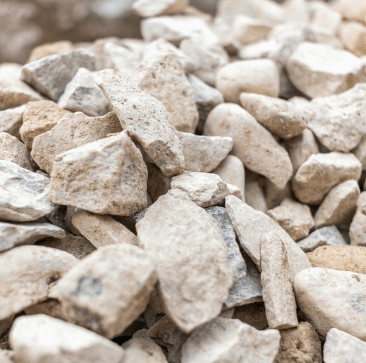
Clinker is the primary ingredient in cement production. Pre-grinding helps reduce its particle size before final grinding, ensuring better energy efficiency and uniformity in the final product.

Coal serves as a fuel source in cement production. Pre-grinding it to a suitable fineness ensures efficient combustion and energy generation in the kiln.
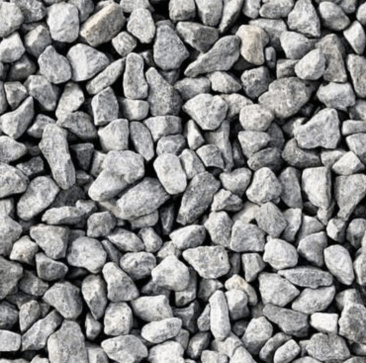
Gypsum is added to control the setting time of cement. Pre-grinding gypsum ensures a fine particle size, leading to improved performance in cement applications.
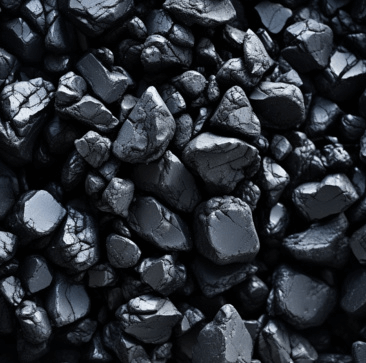
Limestone is commonly used as a filler in cement. Pre-grinding enhances its surface area, improving the mixing process and facilitating better reactions during cement hydration.
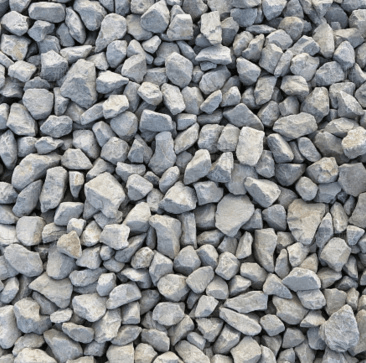
Fly ash, a byproduct of coal combustion, is used as a supplementary cementitious material. Pre-grinding increases its fineness, enhancing pozzolanic activity and improving the strength of concrete.

Silica sand is used in various applications, including construction and mortar production. Pre-grinding helps achieve the desired grain size, improving mix consistency and workability.
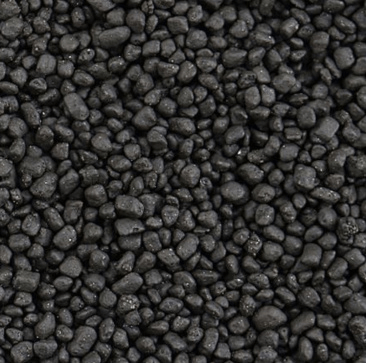
Ground granulated blast-furnace slag (GGBS) is used in cement blends for enhanced durability. Pre-grinding increases its surface area, promoting better integration with other cement components.
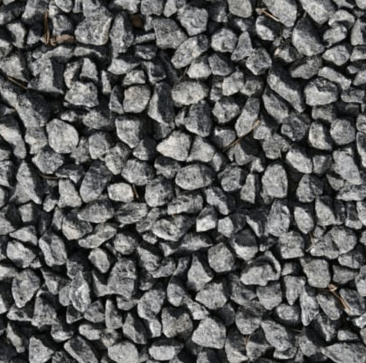
Bentonite is used for its binding and plasticity properties. Pre-grinding improves its dispersion in mixtures, enhancing performance in applications like drilling mud and construction materials.
You can get in touch with us through the following contact information
AddressNo. 2289 Huancheng South Road, Tongxiang, Jiaxing, Zhejiang Province, China. Zip code:314500
Please fill in the sales inquiry form and our sales representatives will be in touch shortly.